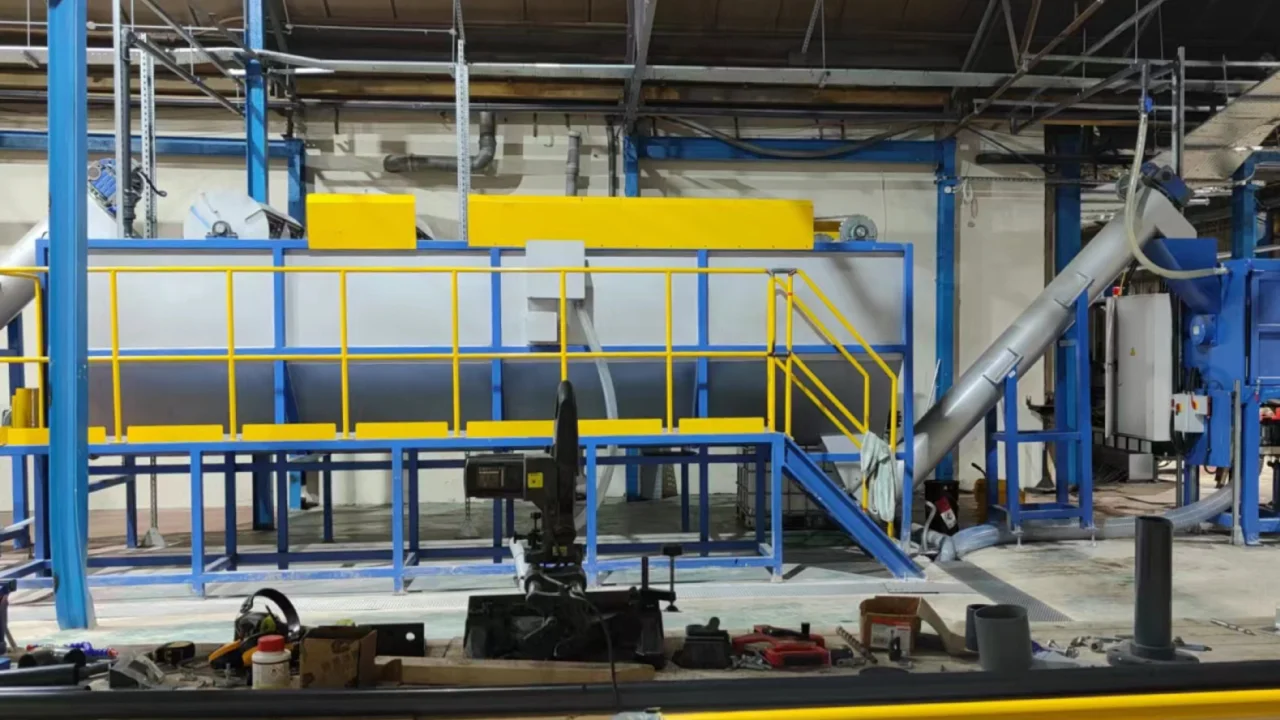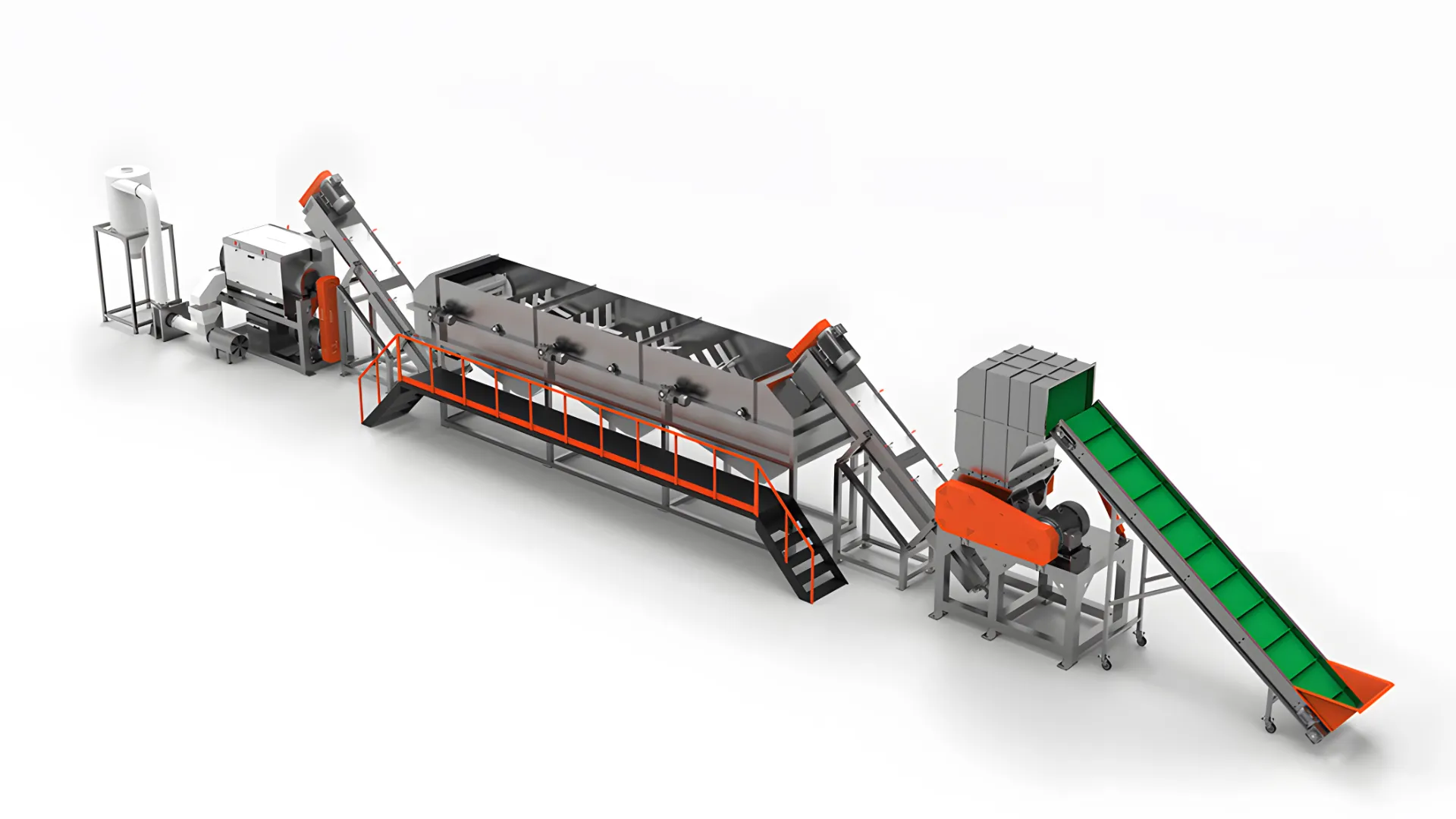Our company excels in offering efficient, sustainable solutions for plastic film recycling. We balance the need to preserve our environment with the increasing demand for plastic pellets. Our comprehensive plastic film washing line can process polypropylene (PP), polyethylene (PE), and various other types of plastic films. Leveraging cutting-edge technology, our fully automated washing and pelletizing line comprises strategically placed recycling machines to maximize efficiency and minimize waste.
Beyond our standard Plastic Film Recycling Washing Line with input capacities from 500kg/h to 3000kg/h, we also provide custom setups for clients with larger-scale recycling requirements. These tailored systems incorporate extra machinery and enhanced capacity to meet each client’s unique needs.
Our turnkey solution effectively recycles loose or baled plastic film into pellets while reducing the carbon footprint of plastic waste. By repurposing rather than landfilling this material, we contribute towards a healthier future environment.
We’re proud of our dedication to sustainability and superior customer service. Our expert team is always ready to assist you in finding the perfect solution for your plastic film recycling needs. Reach out today to discover more about our turnkey solution and how it can help you positively impact the environment while maintaining profitable margins.
Main Technical Parameter
| Model | GSH-500 | GSH-600 | GSH-700 | GSH-800 |
|---|---|---|---|---|
| Rotating speed(rpm/min) | 550 | 500 | 428 | 370 |
| Rotary diameter(mm) | Φ500 | Φ600 | Φ700 | Φ800 |
| Main motor power | 45kW | 55kW | 90kW | 110kW |
| Knife material | SKD11 | SKD11 | SKD11 | SKD11 |
| Capacity(kg/h) | 500-800 | 800-1500 | 1500-2000 | 2000-2500 |
We are pleased to offer you a free solution design service. Our team of experts will design the most suitable plastic film cleaning line solution for you based on your needs and requirements. Please contact us for more information and to start discussing your project.
Working Principle
The entire plastic film washing line is controlled via a central electric control panel and cabinet. Each piece of equipment is connected using conveyors.
Plastic Shredder Machine:
As long pieces of plastic film easily tangle (imagine saran wrap) and clogs conveyors and rotary-based machines, the first step is to cut the plastic film into smaller pieces using a plastic shredder machine. The resulting plastic pieces from the plastic shredder is around 1-5 inches.
Plastic Granulator:
The plastic granulator cuts the plastic film into even smaller pieces approximately 10-20mm in size. With water constantly injected into the cutting chamber, our wet granulation process also “pre-treats”and partially cleans the plastic film before moving onto the next machine.
Friction Washer:
A high-power washing machine, our cold water friction washers spins at nearly 1,000 rotations per minute. As the PP/PE films enters the friction washer, the plastic film rubs against each other at high speeds getting rid of hard to remove contamination. At the same time, any paper and cardboard is broken down into fibers and removed. While one friction washer isstandard, various washing plants have requested a secondary friction washer to ensure thorough cleanliness.
Sink Float Separation Tank:
Using water as a medium, materials that float are separated from materials that sink. In the case of plastic film recycling, PP and PE films will float while heavier contamination such as dirt, sand, glass, metals, other plastics will sink. A screw conveyor at the bottom of the sink float separation tank removes the contamination. While separation is one aspect of this apparatus, a secondary function is to further clean the plastic film.
Centrifugal Dewatering Machine:
The first step in the drying process, our centrifugal dewatering machine uses centrifugal force to remove a large portion of water within the plastic film before moving forward onto the thermaldryers. As thermal dryers use heat to dehydrate water, it requires more energy consumption during operation. Hence, the use of the dewatering machine is beneficial in savings for long run operations costs.
Screw Press Dewatering Machine:
An optional piece of equipment, the screw-press dewatering machine is a more advance version of the standard dewatering machine. Instead of using centrifugal force to remove water from the plastic film, the screw press squeezes the water out via high pressure. This machine can actually take the place of both the dewatering machine and thermal dryers.
Thermal Dryer +Cyclone Separator:
The clean plastic film is vacuumed out of the dewatering machine and into the thermal dryer system where it’ ll travel down a series of stainless steel tubes mixing with hot air. The remaining moisture is dehydrated in this process which ends with a cyclone separator. The cyclone separator allows the plastic film to mix with a fresh stream of cold air which prepares it for storage into the product silo. The cyclone separator is also effective in removing fines and such dust.
Product Silo:
A storage tank for the clean, dry pieces of plastic film.
Plastic Pelletizing Machine:
The final step in plastic film recycling and maybe the most important, the clean film needs to be processed into plastic pellets before it can be used in production. To do so, we offer a specialized plastic film water ring pelletizer system that produces beautiful round plastic pellets.




INQUIRIES
Warranty
All recycling machines come with a 1 year limited warranty.
To get the latest prices and lead times, send us a message using the form below.




